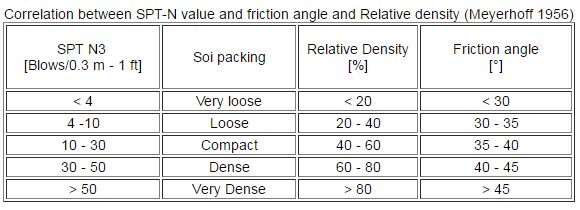Geotechnical Investigations are undertaken by trained specialized engineers and field workers to determine soil characteristics of a certain construction site. These characteristics used and applied to the engineering concepts of the building, structure, or pavement. The following are the primary purposes for a Geotechnical Investigation:
-Determine the makeup and characteristics of the sites different soils types
-Determine depths, thicknesses, and stratas of a site’s soils
-Evaluate anticipated conditions for excavation
-Determinte nature of subsurface water existence in the soil and water table elevation
-Determine a site’s soil suitability as a foundation/base for pavement or structure bearing
The primary way to identify strata and soil properties is by conducting numerous test borings across the site, done by hammering a hollow tube through the ground
which collects soil. These tests identify and define a number of basic soil properties:
-Thickness and type of each soil class
-Water Table
-General Moisture content
Boring samples can be used to obtain more advanced soil properties:
-Gradation – Refers to the particle sizes of a soil and helps identify it’s official classification. Well graded soils have an even and well-distributed range of
particle sizes and poorly graded soils do not. Well graded soils tend to compact more effectively but drain water less effectively.
-Permeability – Capacity of the soil to allow fluids to pass through it
-Liquifaction potential – a standard which measures potential for moisture effects on smaller grained soils.
-Expansion Potential – Measured by an expansion index (EI) providing an indication of swelling potential of compacted soil. Driven largely by percentage and type of
clay in soil. ASTM D 4829 measures Expansion Index to quantify the results. EI range and potential expansion are:
0-20: Very Low
21-50: Low
51-90: Medium
91-130: High
>130: Very High.
-Shear Strength – resistance of a soil from the magnitude of a load based on friction, interlocking particles, and bonding of particle contact areas. A Torvane is a
device which measures the shear strength of a cohesive soil type and can be done in the field or the lab. ‘Friction Angle’ is a parameter related to shear strength of a soil.
-Compressive Strength – generally defined as load per unit area where a soil engages into compression. Used commonly for foundation design and point loading onto
soils.
-Consolidation Potential – The potential for soil to reduce in volume as a result of water moving out of the soil mass in question. Soil consolidation is
distinguished from compaction by water movement/exit as opposed to air voids reduction.
-Liquid/Plastic Limit – measures the range over which a clay sample will remain plastic. For example: adding water to solid dry clay will cause it to eventually behave like a plastic. The percentage of moisture at that point is the plastic limit. At some point the clay will transform again fro a plastic to act like a liquid. That point is called the liquid limit. Clay which has a plasticity index greater than 50 is considered to be highly plastic. Highly plastic clays are often also referred to as “fat clays”. Fat clays typically also fall under the category of highly expansive clays, which are susceptible to frost heave and are considered a poor pavement subgrade base.
-Plasticity Index – difference between the liquid limit and plastic limit.
-Atterberg Limits – Refers to the plastic and liquid limits and plasticity index as mentioned above.
– Standard Penetration Test (SPT) (N-Value) – ‘Blow Count’ of bore tube at bottom of hole which measures ‘Standard Penetration Resistance’ i.e. soil strength, density, and foundation support capability. This test is particularly useful for sand/gravel soils, which can be difficult to measure density otherwise.
The procedure includes blows upon a metal tube at the bottom of a soil bore hole, which measures the number of blows needed to travel the first 6″, next 6″, and last 6″. The number of blows needed to pass that final 12″ is often referred to as the ‘SPT blowcount value’ or ‘N-Value’. The following is a chart showing number of blows which leads one to obtain: soil packing characteristics, relative density, and frictin angle:

– Relative Density (density index) – Is a test result derived from SP Test that shows the:
-void ratio of soil in it’s loosest state versus existing states
and compares it to
-void ratio of soil in it’s loosest state versus densest state